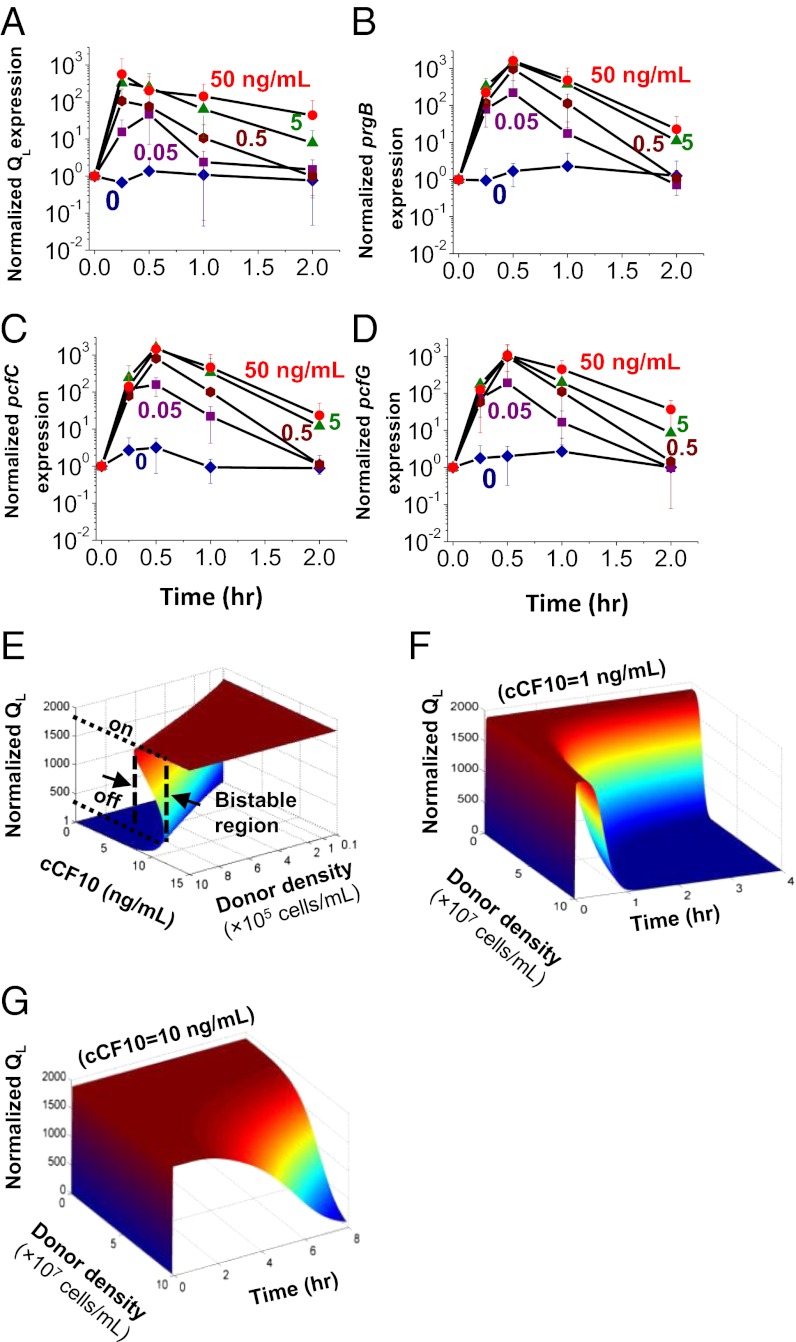Fig. 2.
Switch behavior of pCF10-carrying donor cells in response to pheromone induction. (A–D) qRT-PCR analysis of the dynamics of expression of conjugation determinants encoded by the prgQ operon in response to pheromone induction. mRNA was purified from cultures of pCF10-containing donors exposed to different concentrations of C for various periods. Transcript levels are shown for QL (A), prgB (B), pcfC (C), and pcfG (D), normalized relative to a transcript from a constitutive chromosomal gene, gyrB, and to time t = 0. Data shown in A–D are averages of three independent experiments (error bars are SDs from mean values). (E–G) Mathematical modeling of the pCF10-encoded pheromone response. (E) The steady-state response of QL (normalized to the off state) to induction demonstrates a characteristic bistable switch behavior. The bistable region shifts to a higher level of cCF10 with increasing donor density, accompanied by an increasing threshold level of cCF10 to turn on the conjugative genes. (F and G) Simulated dynamic response of QL transcript level (normalized to the off state at time t = 0) to C induction at various donor cell densities and at two different C concentrations: 1 ng/mL (F), and 10 ng/mL (G). At low donor density, QL is sustained at a high level over a longer period. At a high donor density, it decreases rapidly after a short period of high-level expression. At a high level of induction (10 ng/mL) corresponding to high a level of recipient cell density, QL stays high for a longer period.

